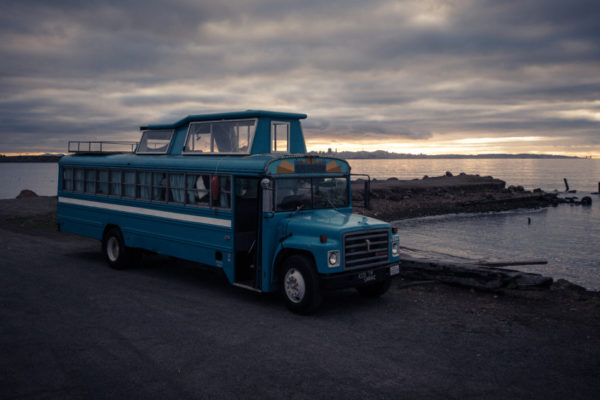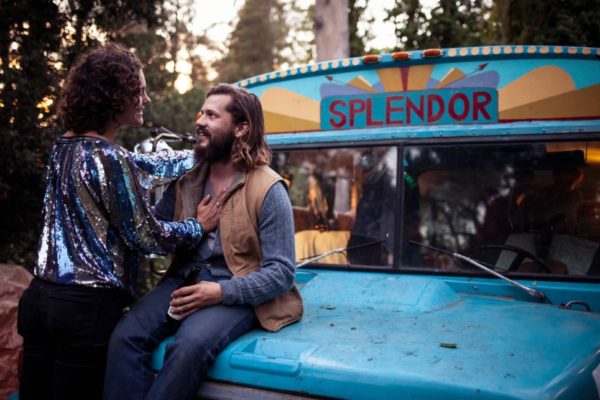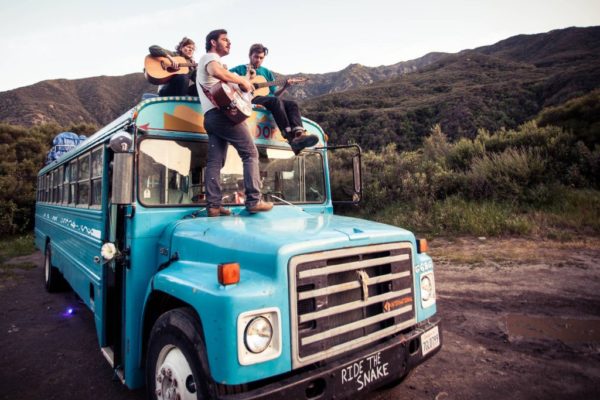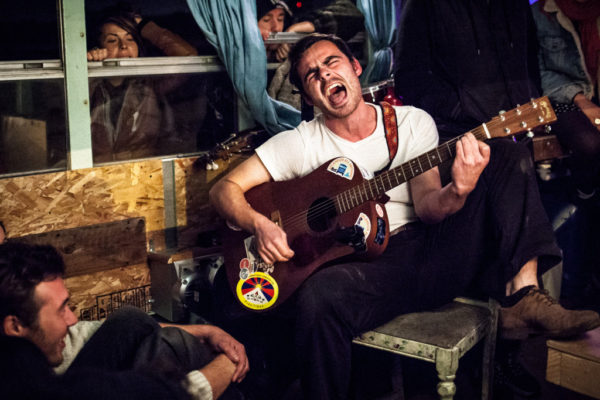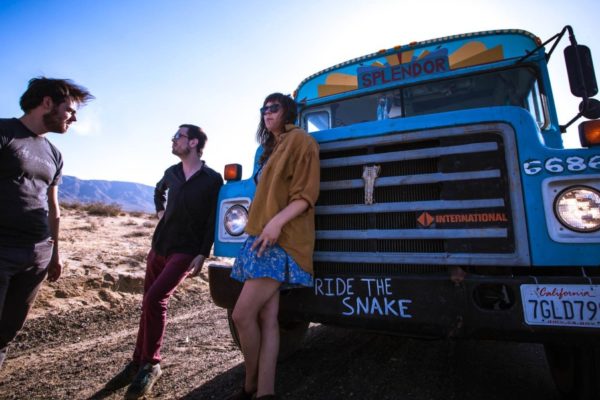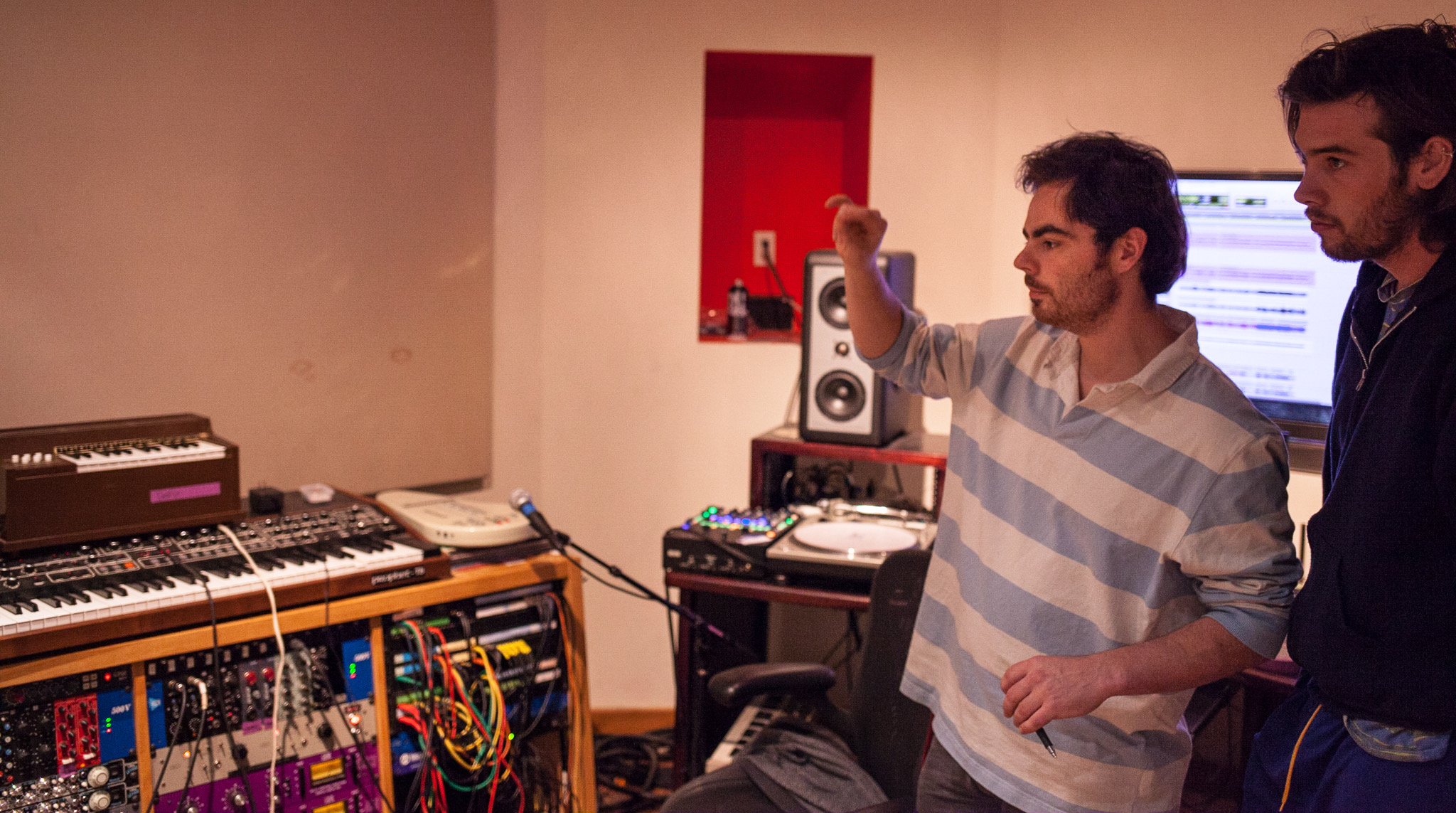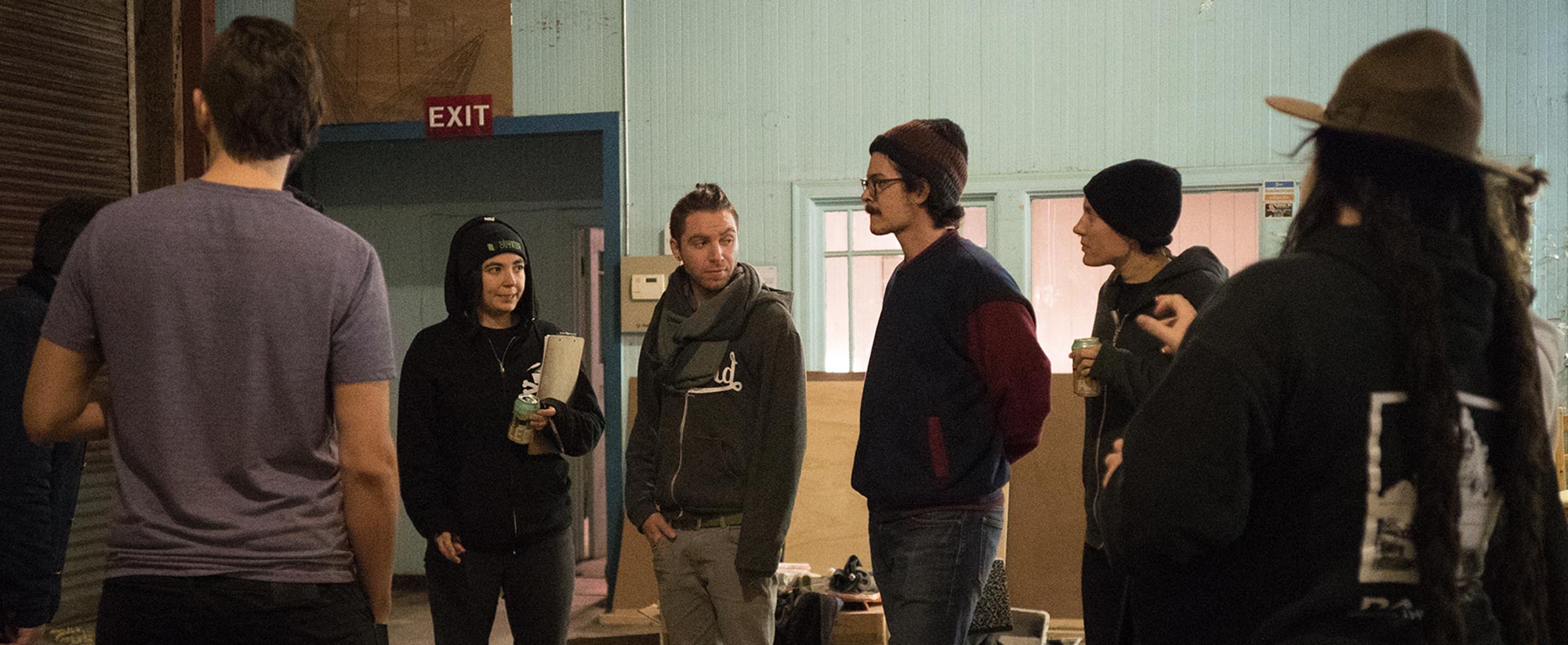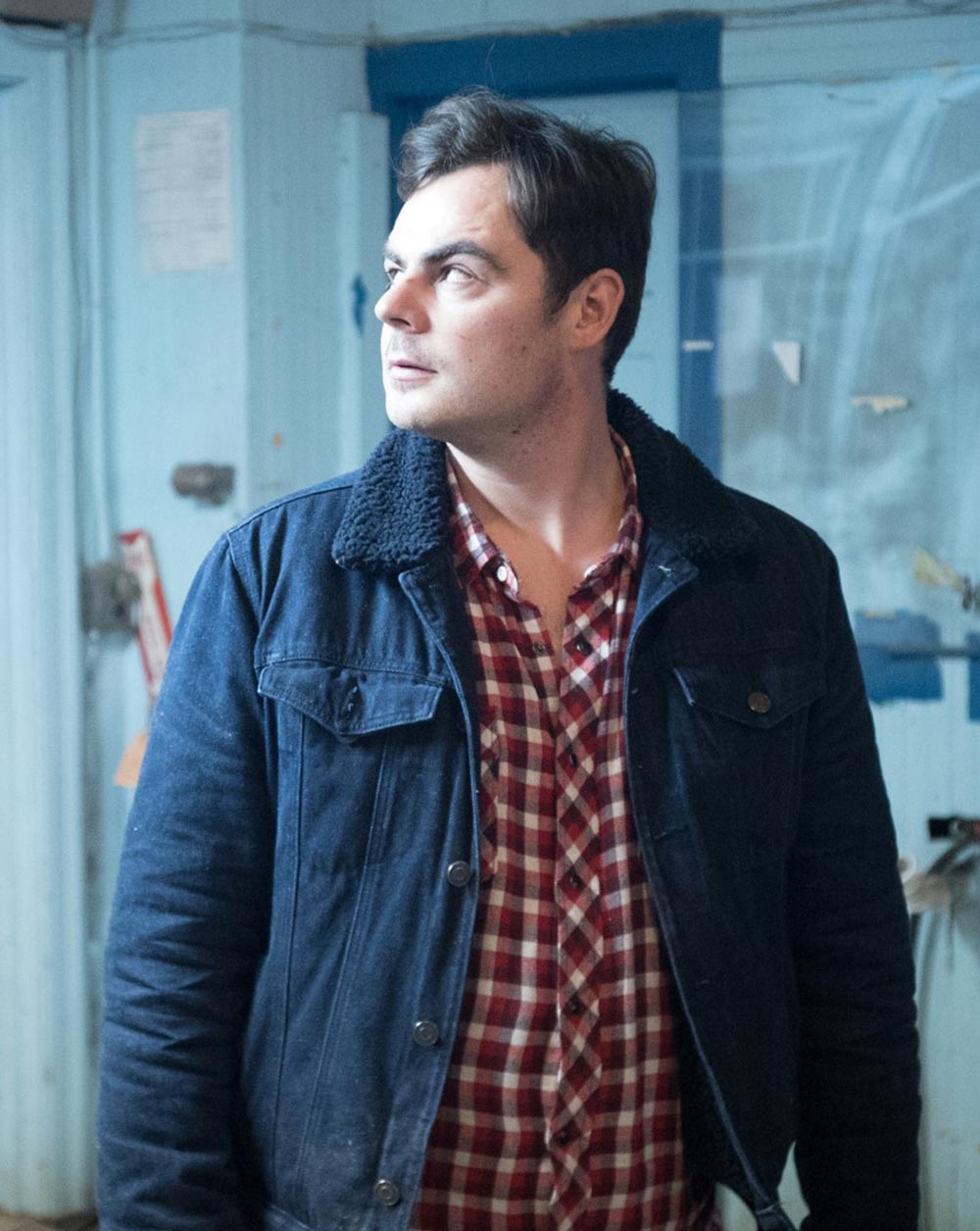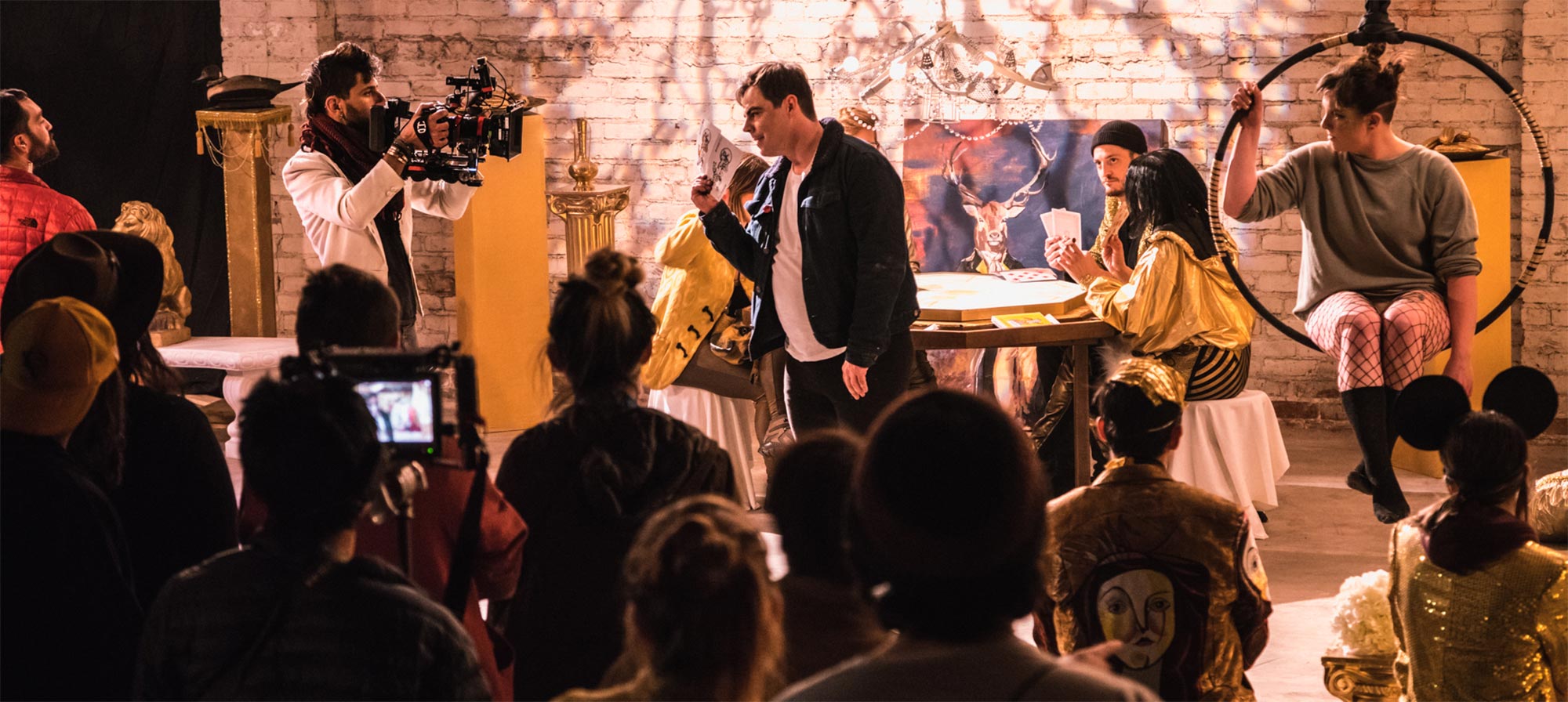
The Gold World
In the second half of Strangetown, we move out of the Red World as Pancho Morris roams through the surreal hedonism of the elites in the “Gold World.” This is what it looks like when dozens of artists depict the fantastical gluttony of our global capitalist system. Can Pancho fix it?
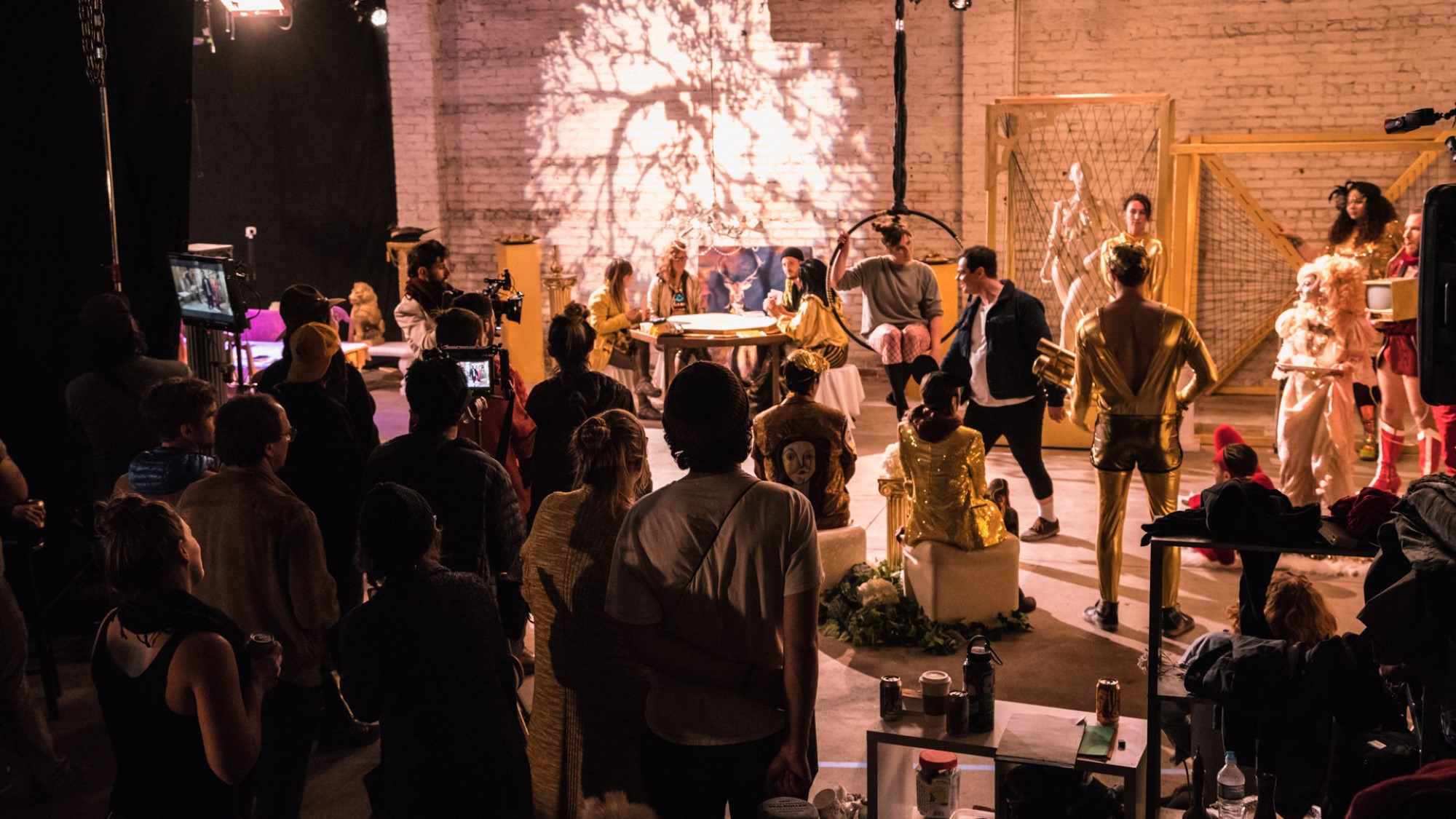
Uncle Sam
by Garett Brown
Bursting into the Gold World with plucky confidence, Pancho first encounters a cartoonish Uncle Sam who spins a globe of gold and red. It is of course, the very same Uncle Sam previously depicted in the mural just outside.
The globe was hand-painted by artist Garett Brown, and each country on it is painted gold if it’s a world power that controls our modern economy, or red if it’s a country that doesn’t dominate our economic system.
The visual depiction reminds us just how very few of us hold the wealth in our society and what it means for millions of people who are disadvantaged by this system. The powers that be, indeed.
Garett Brown | [icon color=”Accent-Color” size=”tiny” icon_size=”” image=”fa-envelope”] brown.garett@gmail.com
The Pig
by Avi Dunn
As Pancho moves through the room he encounters an elegant and grotesque scene: a golden pig eating bacon out of a piggy bank.
“This scene was meant to highlight unethical consumerism,” says artist Avi Dunn. “It can be easy to consume to the point of destroying yourself and everything around you.”
And who’s that sneaking around in the back? Can you spot them?
Avi Dunn | [icon color=”Accent-Color” size=”tiny” icon_size=”” image=”fa-envelope”] avidunn@gmail.com • [icon color=”Accent-Color” size=”tiny” icon_size=”” image=”fa-external-link”] http://avidunn.com
The Bubble-Wrap Bath
by Jen Johnson
Pancho weaves through the pristine and contorted world and finds next a woman bathing in a golden bathtub filled with bubble wrap, surrounded by her coveted packages. Consumerist bliss.

“This scene is a reflection on our obsession with consumerism and materials things – an addiction that’s enabled with next-day delivery,” says artist Jen Johnson. “I wanted to make a scene commenting on gluttony and waste that didn’t embody those principles – so I drew from what we already had: tons of Amazon boxes. These boxes were all sourced from members of the Strangetown crew, so there was plenty of consumerism to mull over while constructing this.”
Jen Johnson | [icon color=”Accent-Color” size=”tiny” icon_size=”” image=”fa-envelope”] jenjohnson04@gmail.com • [icon color=”Accent-Color” size=”tiny” icon_size=”” image=”fa-external-link”] http://infinitejen.com
Diamonds
by Michelle Lessans
with Alex “Animal” Swehla, Justin Cummins, & Galen McAndrew
Pancho continues his tour, and passes by an aristocrat lounging on the back off a masked and gagged servant. The human furniture isn’t very subtle, but it is poignant.
She watches a television held by another scantily clad servant with the cord coming out of his mouth. A third servant kneels in front of her with a tray holding a bowl of diamonds and lines of golden glitter. She snorts a line of glitter and casually eats the diamonds while staring blankly at the television.
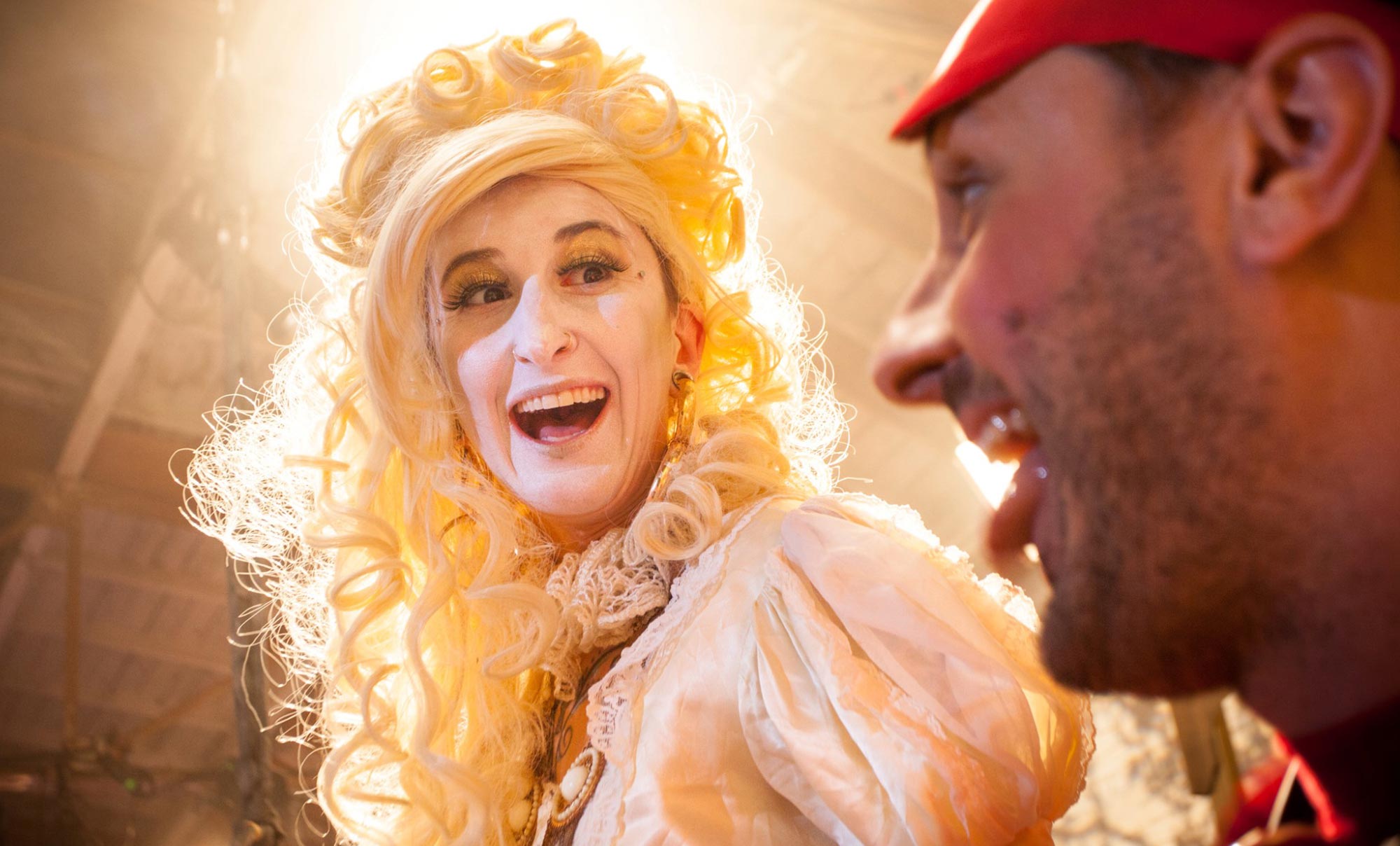
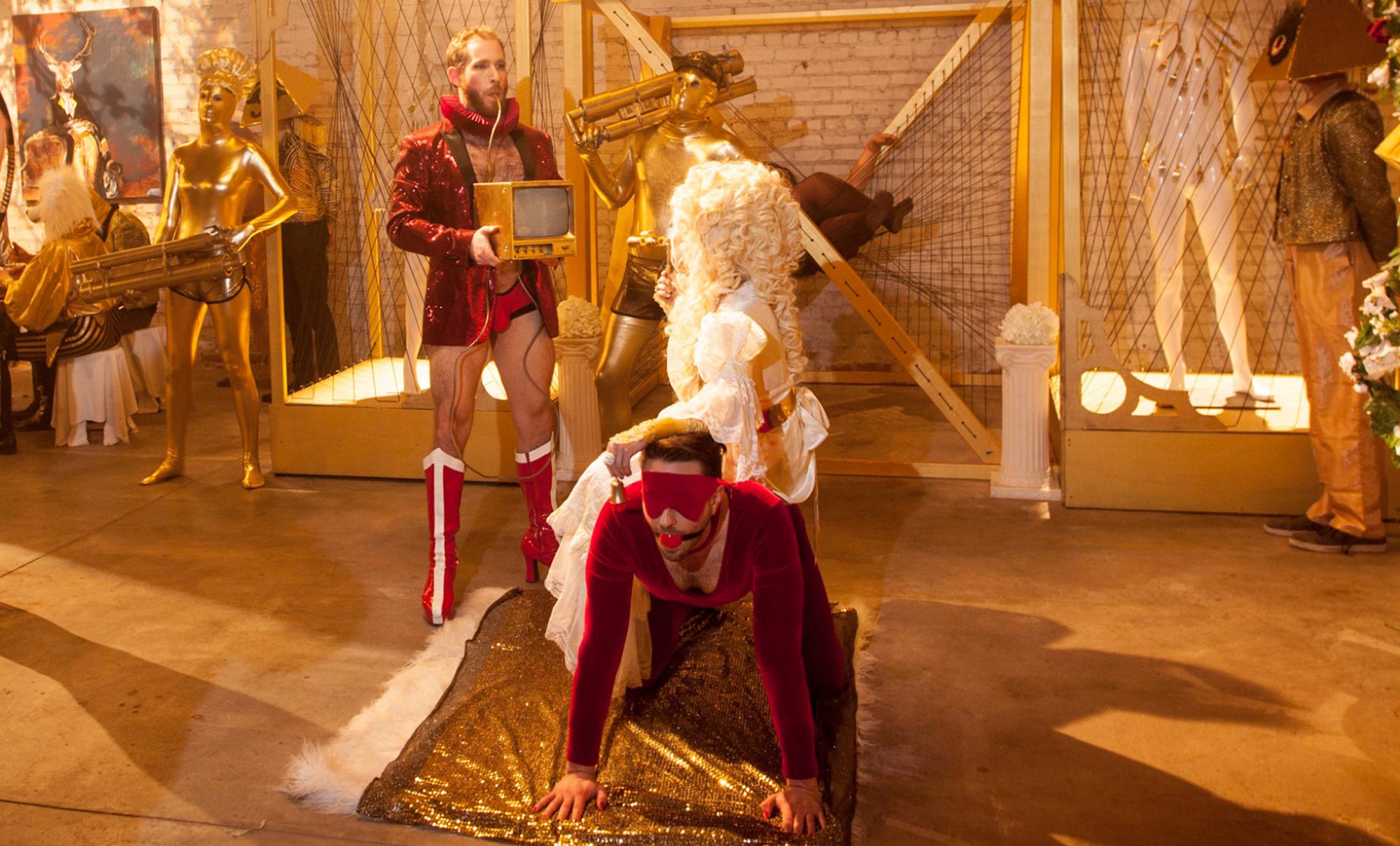
“I wanted to comment on the idea that living in luxury is often the direct result of the subjugation of others,” says artist Michelle Lessans. “We often deaden ourselves to the impact of this through excess and hedonism. We were able to make candy diamonds out of sugar. The rest of the excess was fortunately sourced from thrift stores and collections of friends.”
Michelle Lessans | [icon color=”Accent-Color” size=”tiny” icon_size=”” image=”fa-envelope”] michelle.lessans@gmail.com
The Cash Sentries
by Mrk Dvs
As our protagonist moves deeper into the realm of the rich and powerful, a close eye is kept on him by the golden guards with the all-seeing eyes. Their masks signify surveillance. Fortunately for the elites, they can afford to behave however they please, as we’ve seen. Money has it’s advantages like that.
As the scene becomes more opulent and bizarre, two guards in particular take notice of Pancho as he strides by. He takes an attack position, and fires a cannon full of money at our protagonist. Unfortunately for the guard, this is one problem you can’t solve by throwing money at it.
Mrk Dvs | [icon color=”Accent-Color” size=”tiny” icon_size=”” image=”fa-envelope”] mark@mrkdvs.com • [icon color=”Accent-Color” size=”tiny” icon_size=”” image=”fa-external-link”] http://mrkdvs.com
Dogs of Whore
by Mrk Dvs
But the inhabitants of the Gold World don’t just enjoy consumption – they’re social creatures who enjoy games and entertainment.
As Pancho moves on, he walks past a poker table where the players aren’t human but dogs, betting with meat.
“Even the pets of our wealthy overlords enjoy a more comfortable existence than the red shirts from previous scenes,” says artist Mark Davis. “As Pancho passes he pulls a joker from up his sleeve, representing his role in the story, and foreshadowing the resolution of the story.”
Mrk Dvs | [icon color=”Accent-Color” size=”tiny” icon_size=”” image=”fa-envelope”] mark@mrkdvs.com • [icon color=”Accent-Color” size=”tiny” icon_size=”” image=”fa-external-link”] http://mrkdvs.com
The Banquet
Production Design by Treigh Love
Pancho has arrived at his destination – a banquet table at the apex of the Gold World.
In this twisted opulent world, the banquet table is surrounded by entertainment: performers spinning fire, an acrobat defying gravity, a messianic figure being beaten.
“A messianic figure is tied to a St. Andrews cross, being crucified by two characters with massive hammers. This deranged, profane scene is the preferred dinnertime entertainment by those who keep their death grip on the highest rungs of power. They’re flogging a messiah figure for their own entertainment. The hammers are not only there to signify crucifixion but also as a reference to the hammers of Pink Floyd’s ‘The Wall,’ which are used as a symbol of the fascist movement,” says Mrk Dvs, who directed the vignette.

And while the inhabitants in this opulent world have until now ignored him, Pancho is about to get their attention. He leaps onto the table and looks them each in the eye, challenging them. Do you see me? Are you watching?

Pancho rises to the stage at the head of the table, and a Red World protester passes him a gun. Pancho is the leader of this revolution, and it is a bloody one: he kills everyone in the Gold World.
Everyone, that is, except a purple-clad deer woman.
Who is really pulling the strings here?

